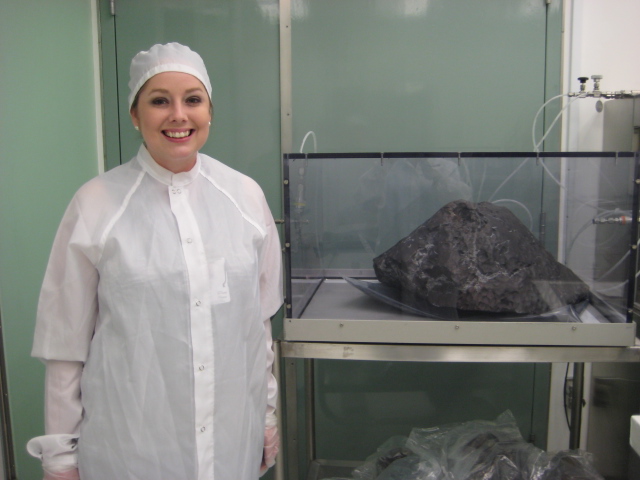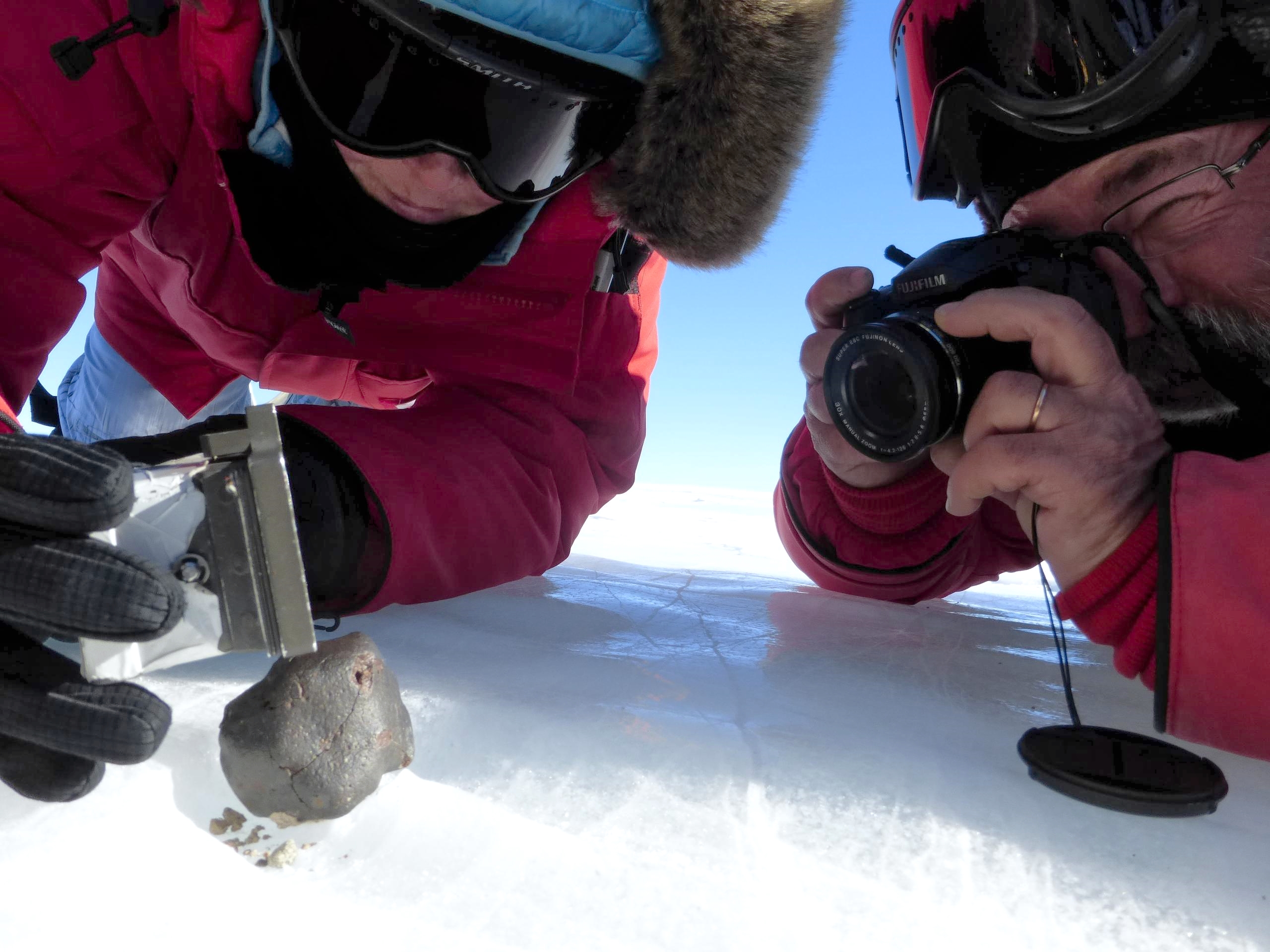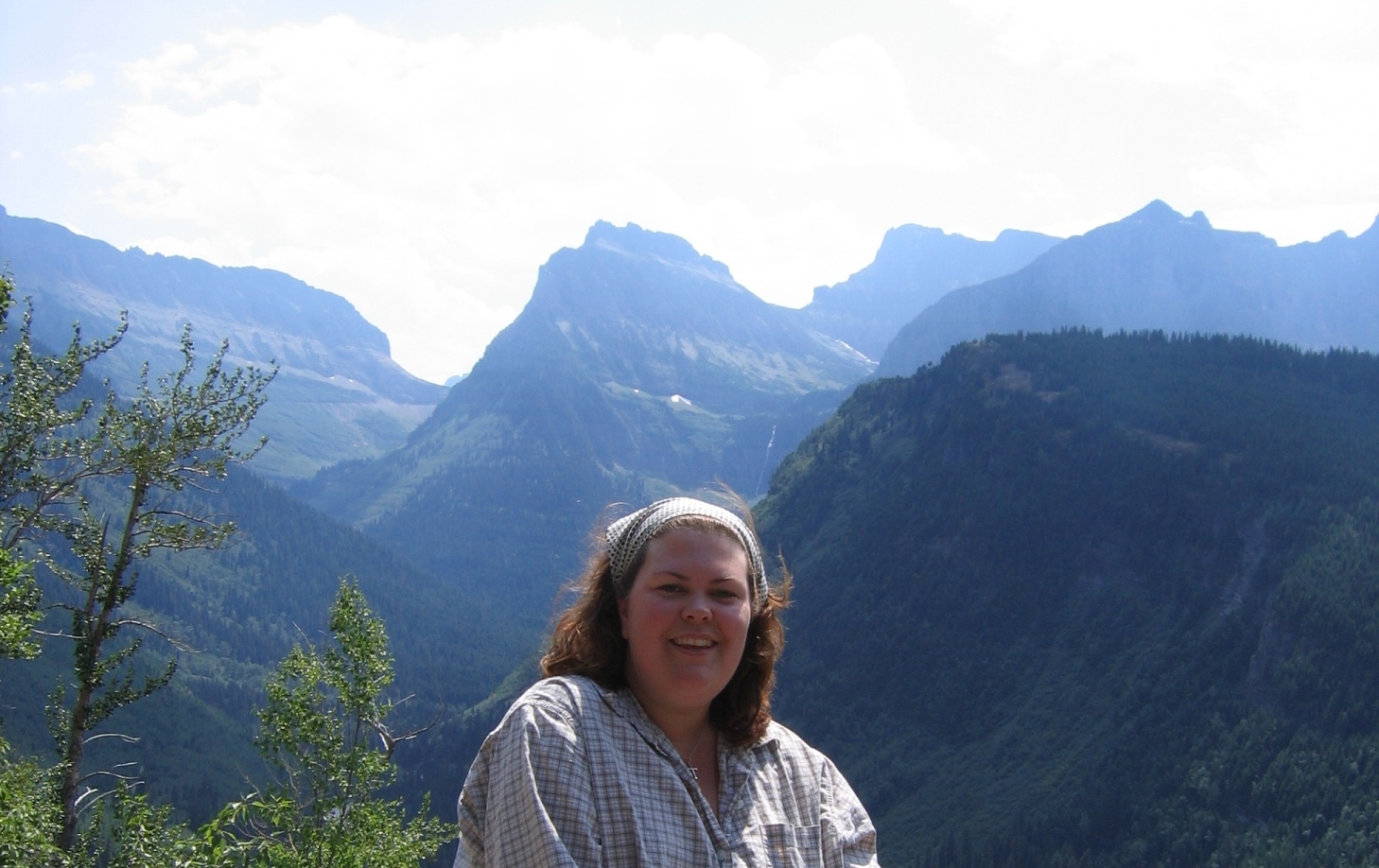Program News
Curator Comments
Kevin Righter, NASA-JSC
This newsletter reports 46 new meteorites from the 2012 and 2013 ANSMET seasons from the Miller Range (MIL13), Graves Nunataks (GRA12), Larkman Nunatak (LAR12), Szabo Bluff (SZA12), and Scott Icefields (SCO12) areas. Meteorites from the 2012 season include several LL3.8 chondrites, EH4 chondrite, ureilite, and a winonaite (the second for the US Antarctic meteorite collection). Meteorites from the 2013 Miller Range season include a beautiful large aubrite, a lunar polymict breccia (anorthositic), two eucrites, and 8 carbonaceous chondrites (1 CM1/2, 4 CM2, 2 CK5, 1 CV3).
Reminder that annual inventory will be sent soon
US Antarctic meteorite inventories will be mailed to all PIs within a few weeks. You will receive a list of samples with a header at the top for two signatures — one for you (the PI) and one for an institutional official. When you receive this inventory, please follow these instructions:
- Print the list
- Compare your sample list to samples in your possession
- Confirm samples are in your possession unless consumed during research (if approval was obtained during original sample request)
- Sign/date top of first inventory page
- Institutional official must sign/date top of first page
- Scan and email it back to us
PIs that do not respond to inventory queries by the NASA Curator will not continue to receive samples from the collection.
Reminder to acknowledge samples received from NASA-JSC
When publishing results of your research, please include the split numbers used in the research.
We also request that scientists use the following acknowledgement statement when reporting the results of their research in peer reviewed journals: “US Antarctic meteorite samples are recovered by the Antarctic Search for Meteorites (ANSMET) program which has been funded by NSF and NASA, and characterized and curated by the Department of Mineral Sciences of the Smithsonian Institution and Astromaterials Curation Office at NASA Johnson Space Center.” Such an acknowledgement will broaden the awareness of the funding mechanisms that make this program and these samples possible.
We suggest you find out how to acknowledge samples received from all the collections/museums from which you have received materials so that all the institutions making samples available to you receive proper credit and acknowledgement.
Staff changes at JSC

Rachel Funk, Meteorite Processor standing by Big Lew in MPL
The past year, Mitch Haller has worked with the meteorite collection and has described many of the samples in this and the Spring 2015 newsletter. Mitch has decided to pursue a higher degree in the Geosciences, and we wish him well in his new position. Thanks to Mitch for all his hard work and dedication to the collection while he was in Houston. While we are saying goodbye to Mitch, we welcome Rachel Funk to the meteorite curation group at JSC. Rachel is graduating from the University of Houston with a Master’s degree for which she studied the mineralogy and petrology of the Larkman Nunatak shergottites. We are excited to have Rachel working with us and welcome her to the JSC Astromaterials curation group.
Reclassification
RBT 04133 was classified as a CR2 in the February 2008 (vol.31 No. 1) newsletter. More detailed information has led to a better understanding of this sample, which we here re-classify to CV3 (reduced), based on the study of Davidson et al. (2014) Meteoritics and Planetary Science 49, Nr 12, 2133–2151. Quoting from their paper: “Data presented here conflict with its initial classification as a CR2. Petrographically, RBT 04133 appears to be a CV3red, based on the presence of large CAIs and chondrules, the apparent lack of magnetite, and a matrix composition of Fa59–60. This is in agreement with its whole-rock C, N, and O-isotope compositions, and the Raman spectral characteristics of its IOM.”
A preview of the 2015-2016 ANSMET field season
Ralph Harvey, Jim Karner and John Schutt, Case Western Reserve University
Homecoming season will soon be upon us. The upcoming field season is a return to one of our most frequently visited sites, the Miller Range (home of the MIL meteorites). This modest range in the middle of the Transantarctic Mountains holds back the ice of the East Antarctic Plateau and shoves it northward to drain into the mighty Nimrod Glacier (and the lesser but still impressive Marsh Glacier to the south). This deviation of flow from its preferred eastward direction creates a lot of stranded ice in a lot of different settings throughout the Miller Range, including 3 big icefields (North, Middle and South) and about a dozen smaller icefields. The diversity of blue ice around the Miller Range is echoed by the diversity of recovered meteorites; roughly 2300 so far, including 65 different classes, some of which are quite rare (e.g. nakhlites, lunars, unclassified achondrites, olivine diogenites, etc.). This newsletter includes a few of those from the 2013-2014 field season.

Alex Meshik and Morgan Nunn Martinez collecting a meteorite in the Miller Range, 2013-2014 field season
2015-16 will be our ninth field season in the Miller Range; after a few early reconnaissance visits, we’ve been going back every other season since 2003. There’s been diversity in our recovery numbers too; Variable weather, aircraft availability issues and/or government shutdowns have led to the Miller Range being the site of some of our lowest and highest total number of meteorite recoveries over the past several decades. Our 2013-14 visit was one of the low spots, with half the team stranded in McMurdo station until early January, resulting in what we can only call “limited” recoveries. The shortcomings of that season have highly influenced our plans for the coming season, when we hope to complete some of what we left undone (with a few modifications). After the usual pre-season activities in McMurdo, we’ll stage everything up to the old CTAM site, and from there we’ll put-in at the margins of the southern Miller Range icefields. If the weather is good and flights stay on schedule, it’s conceivable we could complete systematic searching on that icefield (though our prior predictions on such things are woefully inaccurate). After about four weeks 6 members of the team will move camp to the northern end of the Miller Range, where preliminary visits (hampered by snow) revealed meteorites on patchy blue ice along the Nimrod and in some local alpine valleys.
Meanwhile the other two field party members will head back to McMurdo and then out to the ALH-EET region. We last systematically searched in the area in 1996. Since that time that region of the continent has seen increased and persistent snow cover, so we chose to concentrate our efforts further south where the effects seemed less severe. Over the past few years however local climate seems to have reverted to what we were familiar with in the late 80’s, and with some blue ice remaining to be searched and anecdotal evidence of reduced snow cover we’re giving the region another look.
As usual our field season will begin in mid-November and end in late January; make sure to visit our weblog for updates on how things are going in the field. I hope you see your favorite MIL meteorites there!
Report from the Smithsonian
Cari Corrigan, Geologist (Dept. of Mineral Sci.)
This newsletter announces the classification of 46 meteorites from the 2012 and 2013 ANSMET seasons. Since the last newsletter, we have had a number of ups and downs in the Division of Meteorites.
We have said goodbye to Dr. Emma Bullock, a member of the Division of Meteorites who never failed to lend a hand when needed, and whose assistance was always greatly appreciated. Emma moved to a permanent position at the Carnegie Institution in May, running their FIB-SEM. We miss her smiling face, but wish her all the best! We also said goodbye to Pam Salyer in March. Pam worked with us on classifying meteorites and helping make things run in the absence of a Collections Manager. It has been a rough summer, with only a skeleton crew working in Meteorites at the Smithsonian, and the small number of meteorites classified in this newsletter is a direct reflection of that (however, we made sure to focus on those that required EPMA analyses and would be the most requested, as opposed to classifying just the ordinary chondrites).

Julie Hoskin, Collections Manager, at Glacier National Park
However, we are very happy to report that we have hired a new Collections Manager. Julie Hoskin joined us on August 10th and, thanks to her 15 years of museum and collections management experience, she has hit the ground running! Julie has worked with a wide variety of collection artifacts and specimens from numerous museums, including; the National Museum of American History, the Hirshhorn Museum, the Virginia Museum of Natural History, the National Museum of Health and Medicine, the National Gallery of Art, and the National Museum of Natural History. With a passion for preserving collections for research and exhibition, she is an expert in environmental monitoring and control, constructing specialized housing and supports for objects, appropriate chemicals and materials to use with various specimens, digital imaging of specimens and associated information, as well as cataloging objects and recording specimen data. Julie has been a member of the Society for the Preservation of Natural History Collections (SPNHC) for a number of years and has presented at their annual meetings. We look forward to introducing Julie to the meteoritic community in the coming month. Her contact info is hoskinj@si.edu and 202-633-1825.
For those of you waiting for iron meteorite requests, our iron cutting saw is nearing the end of its repairs and we should be getting your samples to you soon. Apologies and please bear with us as our Museum undergoes major renovations, which required us to move the entire rock cutting lab.
